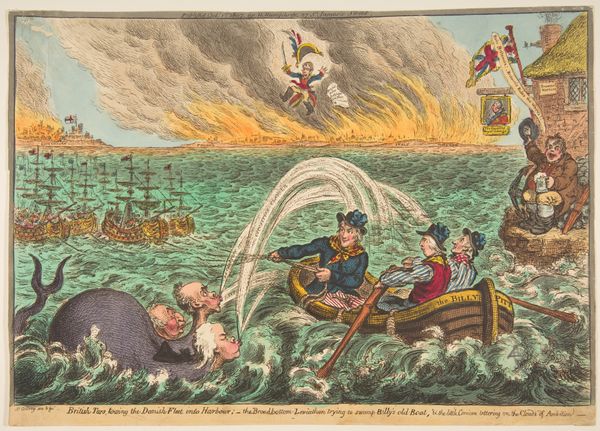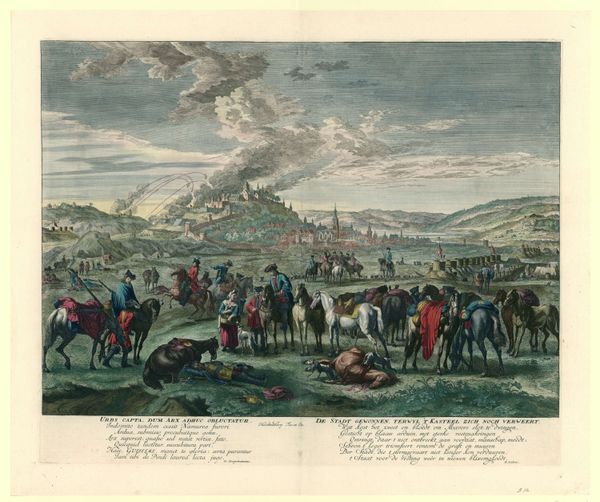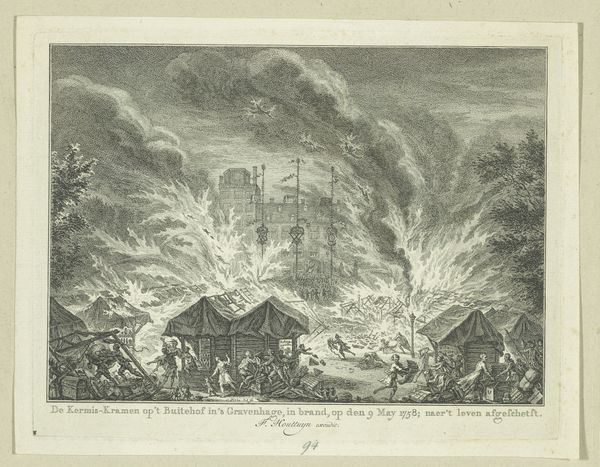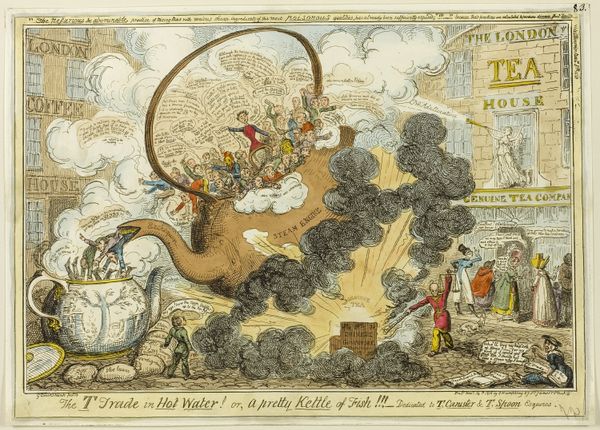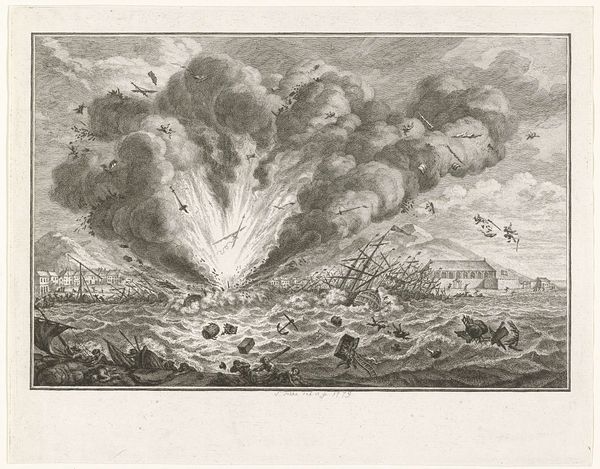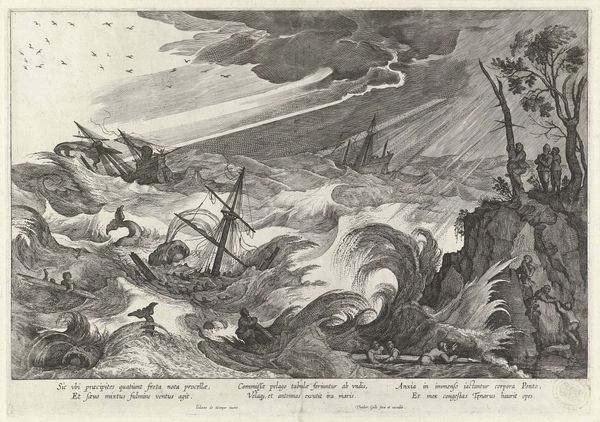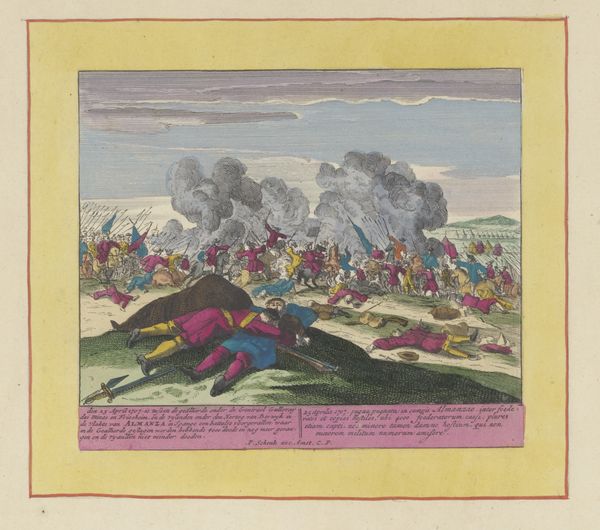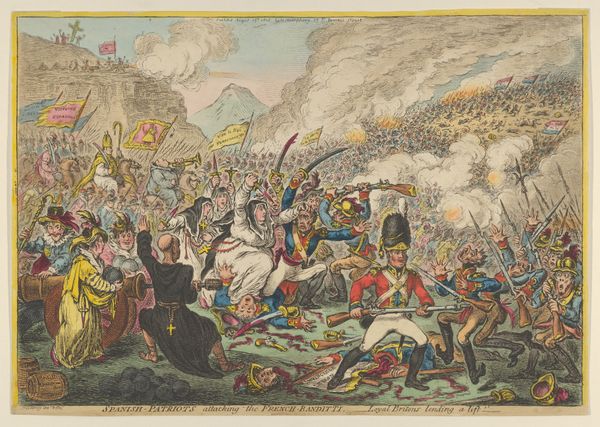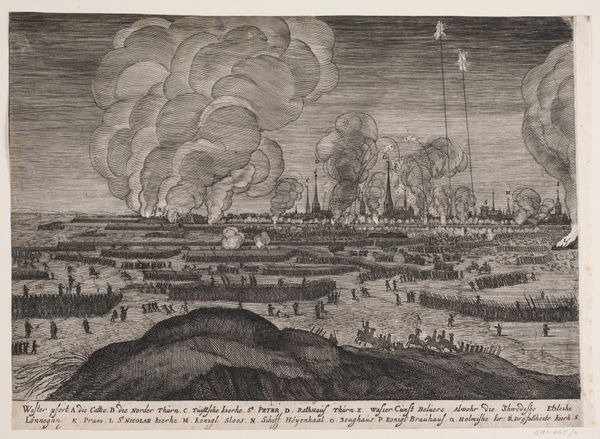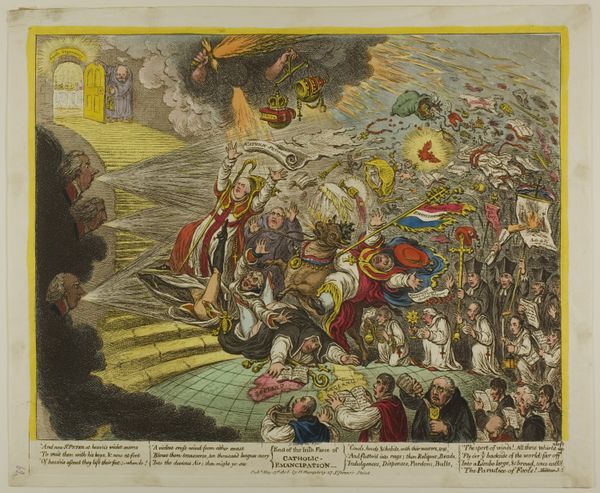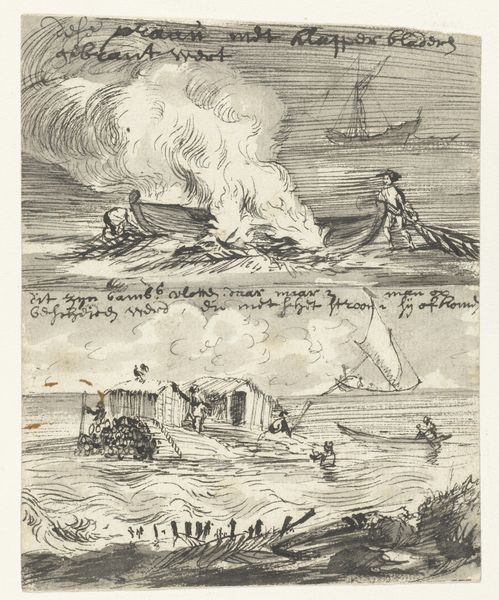
drawing, print, etching, paper
#
drawing
# print
#
etching
#
caricature
#
paper
#
romanticism
#
history-painting
Dimensions: 255 × 358 mm (image); 262 × 365 mm (plate); 265 × 367 mm (sheet)
Copyright: Public Domain
Editor: We're looking at George Cruikshank's etching, "An Eruption of Mount Vesuvius," likely from 1815. The scene is chaotic, almost apocalyptic. There’s this... theatrical destruction, but also a clear satirical intent. How do you interpret this combination of disaster and humor? Curator: It’s vital to understand this print in its socio-political context. Consider the title extends to "… and the anticipated Effects of the WATERLOO Storm.” Vesuvius's eruption likely stands as a metaphor. What do you know about the immediate aftermath of the Napoleonic Wars at that time? Editor: I remember vaguely learning about it. Something about redrawing the map of Europe, new rising empires… Curator: Precisely. Britain, having defeated Napoleon, stood at a crossroads. Cruikshank, a prolific caricaturist, uses the volcano as a visual representation of political upheaval. Those falling figures – are they generic victims, or do they represent specific political figures, possibly connected to France or Napoleon's shattered empire? Editor: I see figures tumbling from the sky on the left! That seems to be answering my questions, possibly alluding to specific politicians of that time. Is the erupting volcano also a commentary on Britain’s role as an emerging superpower? Curator: A compelling reading. It suggests a concern about the social impact of a political change. By combining the imagery of natural disaster with political caricature, Cruikshank tapped into widespread anxieties about the future political and social order. Consider how prints like these, circulated widely, shaped public opinion. Editor: I see the humor now as a way to engage the public, a form of visual political commentary. It’s more than just a historical depiction of an event; it’s an editorial statement. Curator: Exactly. These satirical prints remind us that art isn’t created in a vacuum; it’s part of a broader conversation about power, society, and change. This was all very insightful; thank you.
Comments
No comments
Be the first to comment and join the conversation on the ultimate creative platform.
